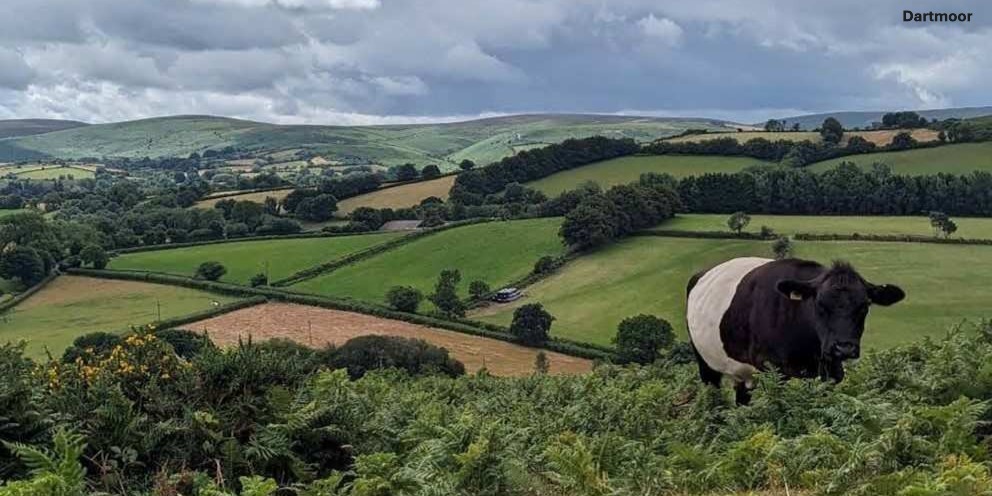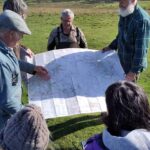Case Study – Dartmoor, England (UK)
🌿 About the Satoyama Landscape
On Dartmoor, farms usually have a stone farmhouse in a valley. Around the farm, there are small fields fenced by stone walls and thick bushes on raised banks. These fields go up the valley sides into larger grazing areas called ‘newtake’. These grazing lands border big open moorlands made of grasses and small shrubs.
Farming here is mostly raising animals like sheep and beef cattle. These animals eat grass on the whole farm, including the moors. Many parts of the moor are commons, where many farmers share the land for grazing.
On the high hills, there are deep peat deposits and blanket bogs. These are important for many plants and animals and also store a lot of carbon. Small rivers flow from the hills into the valleys.
People have lived and farmed here since ancient times, and many old archaeological sites are found on the moors. Small forests gave people wood for fuel, shelter, and building.
⚠️ Challenges and Threats
Farming here is not very profitable and depends a lot on government money. But since 2020, after the UK left the European Common Agricultural Policy, these subsidies are being changed and reduced.
Much of the commons land is protected for nature and archaeology, but many people use it for recreation. Farms are getting bigger and using fewer workers to handle rising costs and low profits. This makes it harder for farmers to take care of the commons land.
Since 2000, farmers have followed special rules to protect the environment on the commons. These rules limit how many animals can graze and try to help the growth of dwarf heath plants. But because farming support changed in 2005, these efforts have not worked well, and some plants that animals don’t like have taken over.
The government wants to reduce the number of grazing animals even more to stop ‘overgrazing’. But local farmers think this will only make the problem worse.
Many people think of Dartmoor as wild because it is open and big. Young farmers are finding it hard to keep farming and are waiting for new environmental support, which has been delayed by government problems.
Some landowners want to ‘rewild’ the park, thinking nature will get better if farming stops, but this is a mistake.




